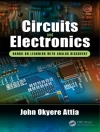Photovoltaic electricity generation is a rapidly growing industry, and a key pillar of a decarbonised energy system. In modern solar cells, laser technology is used to form localised structures such as a selective emitter through doping or to locally ablate dielectric layers for contact definition. A critical factor is the ability to passivate the laser-induced defects to prevent premature charge carrier recombination reducing the cell efficiency. Hydrogenation is such a passivation technique. The exact mechanisms have until recently been poorly understood, so this timely reference covers the recent breakthroughs in the understanding of hydrogen passivation.The book addresses key technologies for improving the efficiency of solar cells, including the industry-dominating PERC concept with an added rear passivation layer to reduce recombination. Coverage includes hydrogen passivation mechanisms, bulk and surface defect passivation, hydrogenation of light-induced defects, potential negative impacts of hydrogen, and laser doping for rapid diffusion and for selective emitter formation. This work also provides brand new results that enable low-quality silicon to be used for heterojunction applications and could pave the way for future low-cost, high-efficiency silicon solar cell technologies featuring passivated contacts to be fabricated on p-type wafers.This work is indispensable for researchers in the field of photovoltaic energy, in academia as well as industry.
Brett & Catherine
Hydrogen Passivation and Laser Doping for Silicon Solar Cells [EPUB ebook]
Hydrogen Passivation and Laser Doping for Silicon Solar Cells [EPUB ebook]
ซื้อ eBook เล่มนี้และรับฟรีอีก 1 เล่ม!
ภาษา อังกฤษ ● รูป EPUB ● ISBN 9781785616242 ● บรรณาธิการ Brett & Catherine ● สำนักพิมพ์ The Institution of Engineering and Technology ● ที่สามารถดาวน์โหลดได้ 3 ครั้ง ● เงินตรา EUR ● ID 7948120 ● ป้องกันการคัดลอก Adobe DRM
ต้องใช้เครื่องอ่านหนังสืออิเล็กทรอนิกส์ที่มีความสามารถ DRM












